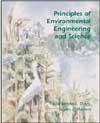 |  Principles of Environmental Engineering and Science Mackenzie L Davis,
Michigan State University - East Lansing
Susan J Masten,
Michigan State University - East Lansing
Table of Contents
1. Introduction
1. Introduction
1.1 What Is Environmental Science?
1.2 What Is Environmental Engineering?
1.3 Historical Perspective
1.4 How Environmental Engineers And Environmental Scientists Work Together
1.5 Introduction To The Principles Of Environmental Engineering And Science
1.6 Environmental Systems Overflow
1.7 Environmental Legislation And Regulation
1.8 Environmental Ethics
2. Chemistry
2.1 Introduction
2.2 Basic Chemical Concepts
2.3 Organic Chemistry
2.4 Water Chemistry
2.5 Soil Chemistry
2.6 Atmospheric Chemistry
3. Materials And Energy Balances
3.1 Introduction
3.2 Unifying Theories
3.3 Materials Balances
3.4 Energy Balances
4. Ecosystems
4.1 Introduction
4.2 Human Influences On Ecosystems
4.3 Energy And Mass Flow
4.4 Nutrient Cycles
4.5 Population Dynamics
4.6 Lakes: An Example Of Mass And Energy Cycling In An Ecosystem
4.7 Environmental Laws To Protect Ecosystems
5. Risk Perception, Assessment, And Management
5.1 Introduction
5.2 Risk Perception
5.3 Risk Assessment
5.4 Risk Management
6. Hydrology
6.1 Fundamentals Of Hydrology
6.2 Measurement Of Precipitation, Evaporation, Infiltration, And Steamflow
6.3 Groundwater Hydrology
6.4 Groundwater Flow
6.5 Surface Water And Groundwater As A Water Supply
7. Geological And Soil Resources
7.1 Introduction
7.2 The Rock Cycle
7.3 Mineral Concentration
7.4 Rock And Mineral Resources
7.5 Energy Resources
7.6 Soil Formation And Properties
7.7 Soil Resources
7.8 Parameters Of Sustainability
7.9 Soil Conservation
8. Water Quality Management
8.1 Introduction
8.2 Water Pollutants And Their Sources
8.3 Water Quality Management In Rivers
8.4 Water Quality Management In Lakes
8.5 Water Quality In Estuaries
8.6 Water Quality In Oceans
8.7 Groundwater Quality
9. Water Treatment
9.1 Introduction
9.2 Rapid Mixing, Flocculation, And Coagulation
9.3 Softening
9.4 Sedimentation
9.5 Filtration
9.6 Disinfection
9.7 Other Treatment Processes For Drinking Water
9.8 Water Plant Residuals Management
10. Wastewater Treatment
10.1 Introduction
10.2 Characteristics Of Domestic Wastewater
10.3 On-Site Disposal Systems
10.4 Municipal Wastewater Treatment Systems
10.5 Unit Operations Of Pretreatment
10.6 Primary Treatment
10.7 Unit Process Of Secondary Treatment
10.8 Disinfection
10.9 Advanced Wastewater Treatment
10.10 Land Treatment
10.11 Sludge Treatment
10.12 Sludge Disposal
11. Air Pollution
11.1 Air Pollution Perspective
11.2 Fundamentals
11.3 Air Pollution Standards
11.4 Effects Of Air Pollutants
11.5 Origin Of Fate And Air Pollutants
11.6 Micro And Macro Air Pollution
11.7 Air Pollution Meteorology
11.8 Atmospheric Dispersion
11.9 Indoor Air Quality Model
11.10 Air Pollution Control Of Stationary Sources
11.11 Air Pollution Control Of Mobile Sources
11.12 Waste Minimization
12. Solid Waste Engineering
12.1 Perspective
12.2 Characteristics Of Solid Waste
12.3 Solid Waste Management
12.4 Solid Waste Collection
12.5 Waste As Resource
12.6 Solid Waste Reduction
12.7 Disposal By Sanitary Landfill
13. Hazardous Waste Management
13.1 The Hazard
13.2 EPA’s Hazardous Waste Designation System
13.3 RCRA And HSWA
13.4 CERCLA And SARA
13.5 Hazardous Waste Management
13.6 Treatment Technologies
13.7 Land Disposal
13.8 Groundwater Contamination And Remediation
14. Agriculture And The Environment
14.1 Introduction
14.2 Depletion Or Surface And Groundwater Resources
14.3 Soil Erosion
14.4 Water Quality
14.5 Air Quality
14.6 Animal Waste Management
15. Noise Pollution
15.1 Introduction
15.2 Effects Of Noise On People
15.3 Rating Systems
15.4 Community Noise Sources And Criteria
15.5 Transmission Of Sound Outdoors
15.6 Traffic Noise Prediction
15.7 Noise Control
16. Ionizing Radiation
16.1 Fundamentals
16.2 Biological Effects Of Ionizing Radiation
16.3 Radiation Standards
16.4 Radiation Exposure
16.5 Radiation Protection
16.6 Radioactive Waste
Appendix A
Properties Of Air, Water, And Selected Chemicals
|
|




 2004 McGraw-Hill Higher Education
2004 McGraw-Hill Higher Education